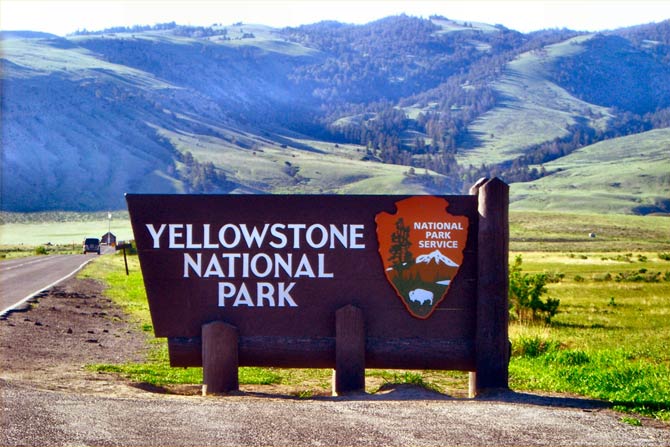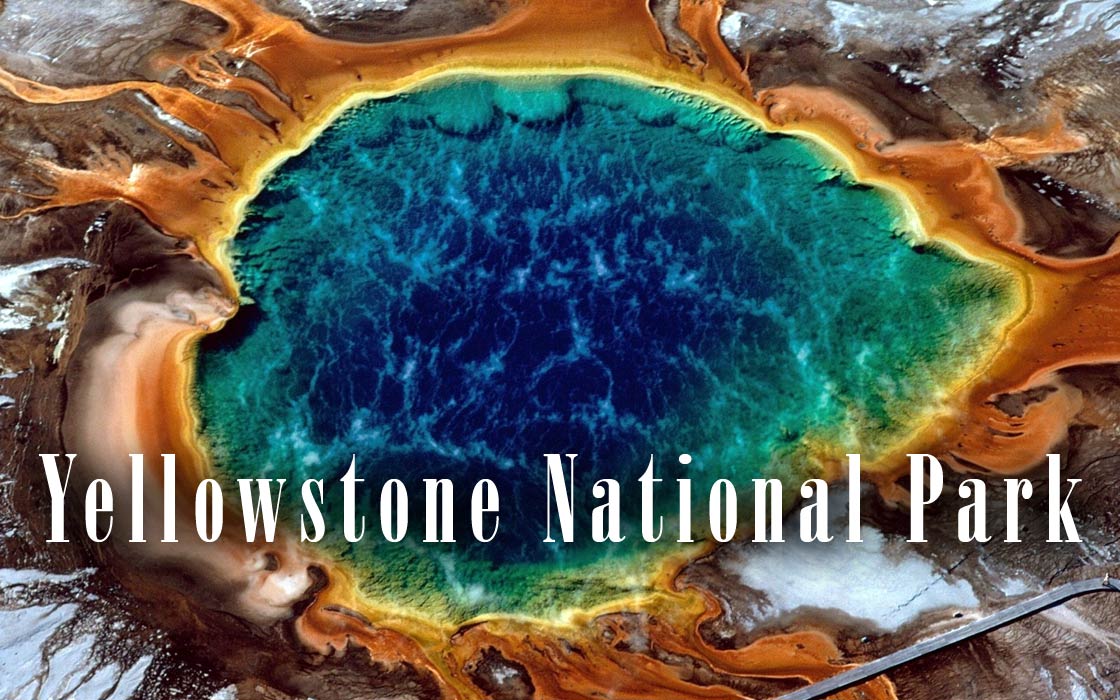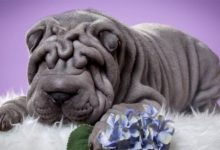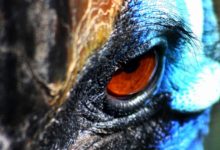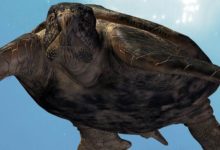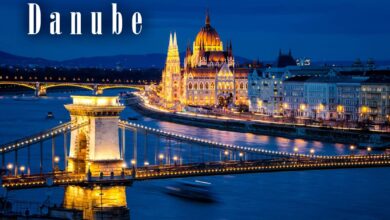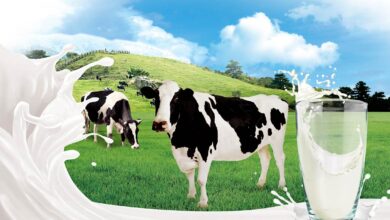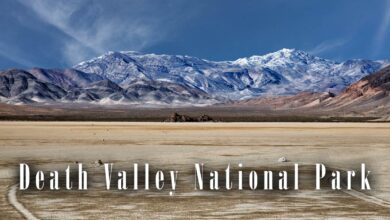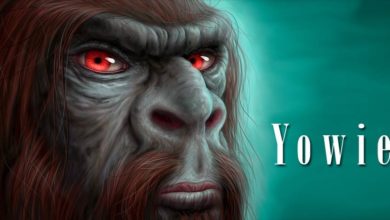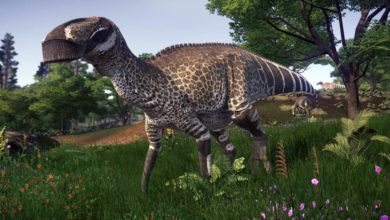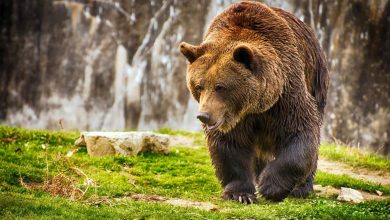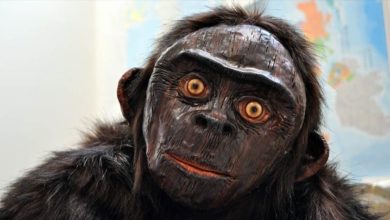Yellowstone National Park
Yellowstone National Park
At the beginning of the nineteenth century, white people who came to these areas could not fully believe what they saw. Their eyes saw phenomena that cannot be found elsewhere. Stories about steaming lakes or hot water jets were often treated as figments. Only numerous expeditions to the area of today’s Yellowstone National Park showed that the first discoverers of this place were not delusional when they talked about, for example, a rainbow-colored lake or fossilized trees (resulting from wood petrification – the transformation of organic material into a fossil).
You can write a thick book about the natural attractions of the Yellowstone National Park. We tried to cover the topic in one article, being aware that it has not been exhausted. We invite you on a trip to Yellowstone.

Location
The vast area of the park lies on the border of three North American states: Wyoming, Montana and Idaho. Most of its territory (approximately 96%) is in Wyoming.
Area
The area of Yellowstone National Park is over 2,219,791 acres (8,983.18 km2).
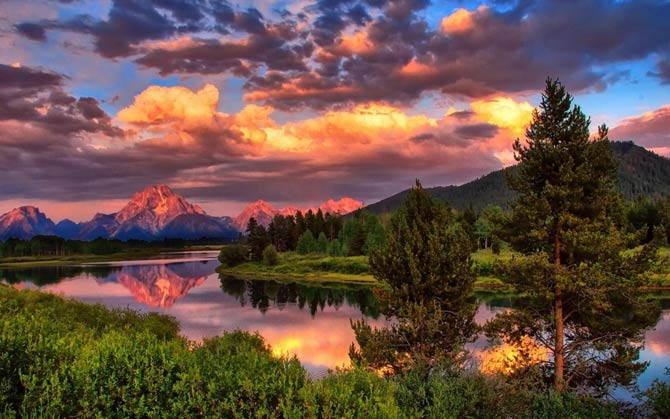
History of Yellowstone
As evidenced by paleontological finds in the form of stone arrowheads, the area of today’s Yellowstone National Park has been home to Indians for at least 11,000 years.
Scientific expeditions to the local area took place from the beginning of the 19th century. Between 1807 and 1808, a certain John Colter (a member of the Lewis and Clark expedition, who left the ranks of the group) wandered through some of the lands now belonging to the Park. He discovered a geothermal area in the northeastern area near Tower Fall. Back then, and many years later, unusual natural phenomena such as steaming rivers, petrified trees or boiling mud were considered something mythical, otherworldly.
In the second half of the 19th century (1856), the so-called mountain man, Jim (James) Bridger, wrote about boiling springs, geysers and yellow rocks. His stories, however, were not taken seriously, as he himself had a reputation as a fairy tale writer. In 1859, the Raynolds expedition (commissioned by the US Army) began, which for 2 years explored the northern regions of the Rocky Mountains. Although the heavy spring snow made travel very difficult, Raynolds’ expedition is believed to be the first to enter Yellowstone.
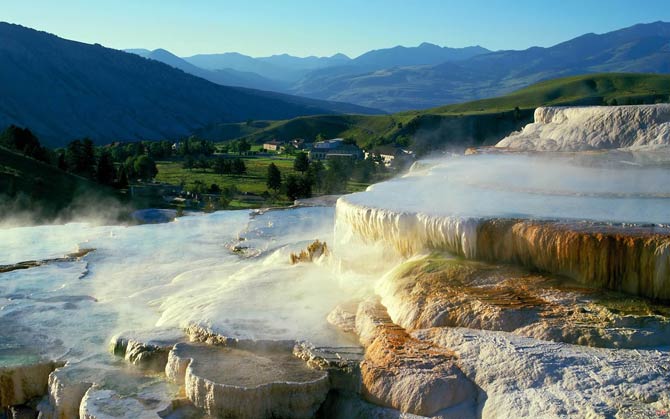
Expeditions
The first expedition aimed at a thorough exploration of Yellowstone took place a few years later, in 1869. It is called the Cook-Folsom-Peterson Expedition. In 1870, however, further research was carried out by another expedition – the Washburn-Langford-Doane Expedition, escorted by the US Army. After a month of research and sampling, one of the expedition’s members, Cornelius Hedges, proposed that the region should be designated a national park.
In 1871 there was a groundbreaking geological expedition – the Hayden Geological Survey. On its basis, an extensive report was prepared, enriched with numerous illustrations. He helped convince Congress to give Yellowstone national park status. On March 1, 1872, the eighteenth president of the United States – Ulysses S. Grant – signed the so-called The Act of Dedication, thereby creating Yellowstone National Park.
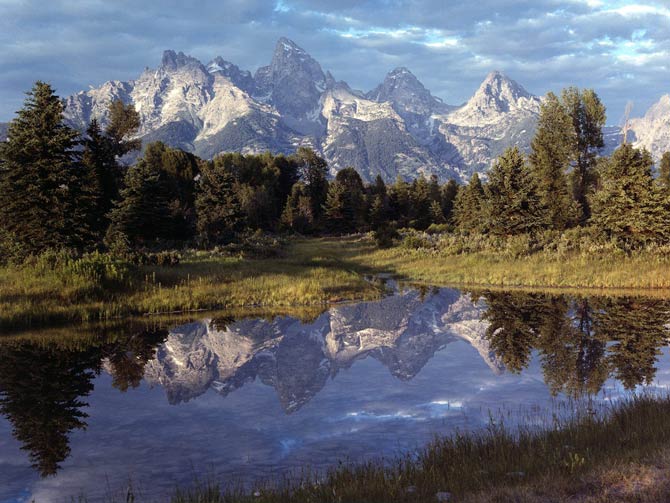
Why Yellowstone?
At the end of the 18th century, French trappers named the river (today called Yellowstone) Roche Jaune. This name is probably a translation from the Native American Hidatsa Mi tsi a-da-zi, meaning “Yellow Rock River”. American trappers created their own name on this basis – Yellow Stone. It is suspected that the name refers primarily to the yellow rocks in the Grand Canyon of Yellowstone.
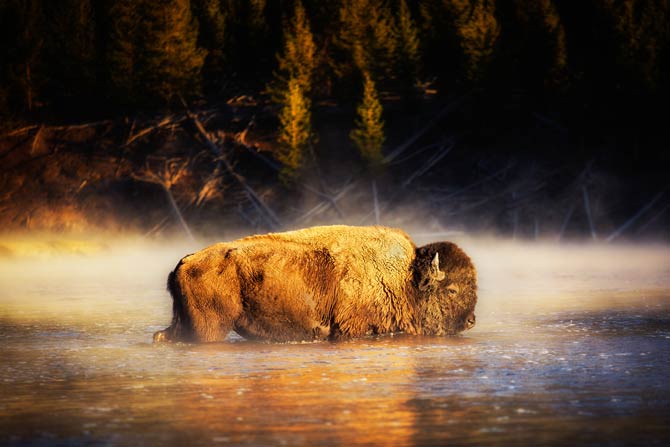
Fauna and Flora
Fauna
Yellowstone is the largest and most famous habitat of modern megafauna in the continental United States. About 60 species of large mammals live within the park, including wolves, coyotes, Canadian sheep, Canadian lynxes, pumas, extremely rare grizzly bears and wolverines, Canadian deer and American buffalo. For the latter, Yellowstone National Park is also one of the last refuges in the USA.
Apart from mammals, there are 311 species of birds, of which almost 50% nest in the park. Since 1999, 26 breeding pairs of the American White-tailed Eagle have been registered. Rare species include: patterned duck, trumpeter swan, osprey, common loon and whooping crane – one of the most difficult reachable birds in the world.
Yellowstone waters are home to 18 species of fish.
In addition, there are 7 species of reptiles, including the painted turtle, rubber boa, and prairie rattlesnake, bullsnake, sagebrush lizard, valley garter snake and wandering garter snake and four species of amphibians, including the boreal chorus frog, tiger salamander, western toad and columbia spotted frog.
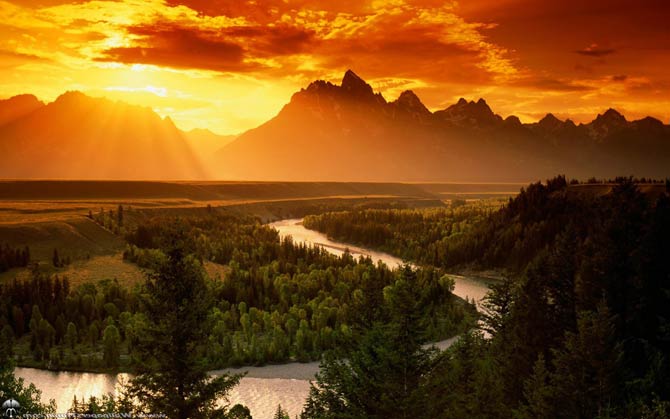
Flora
Almost 2,000 species of trees and other vascular plants are native to the park. Almost 200 species are considered to be artificially introduced plants. Yellowstone’s flora consists of lodgepole pines (Pinus contorta), which make up about 80% of the total forest area. Other representatives of conifers are blue fir, mountain fir and Pinus albicaulis. The most common deciduous species are branchy willows and tall aspen poplars with almost white bark.
There are also flowering plants that usually bloom from May to September. The Yellowstone sand verbena (Abronia ammophila), resembling spheres formed from tiny flowers, are plants unique to Yellowstone’s National Park.
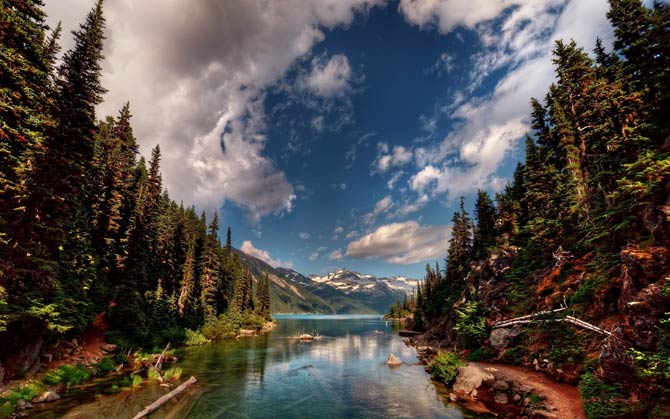
Geysers, volcanoes and hot springs – the essence of Yellowstone
Looking at the unusual phenomena taking place in Yellowstone, it can be shyly assumed that our planet experienced similar processes at the dawn of time. Exploding geysers, steaming hot springs and a restless supervolcano below the earth’s surface show us that the interior of the Blue Planet continues to pulsate with life.
While staying in Yellowstone, you can feel the power and unlimited power of nature, find your own roots and thus unite with the world. This union comes almost by itself, although many visitors are unaware of it. Moreover, it is one of those places where we can only be passive observers. We cannot touch these most interesting phenomena, but only let them exist, thanking at the same time for watching the never-ending performance of Mother Nature.
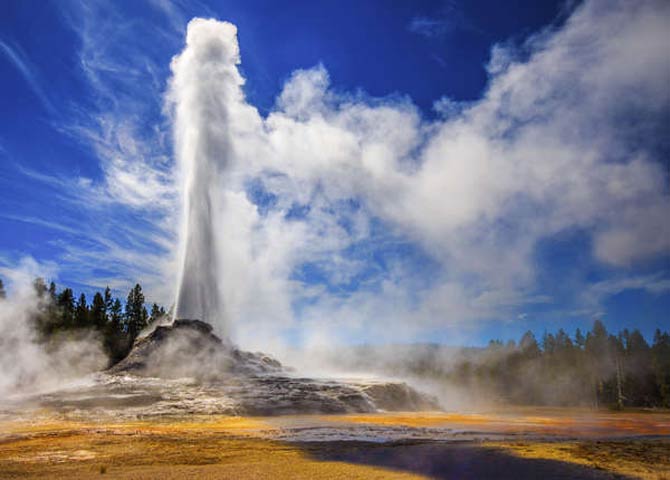
Active supervolcano
Yellowstone is located in a tectonically specific place, hence the existence of such phenomena as the Yellowstone Caldera, known as the supervolcano. The caldera is a large volcanic basin, created as a result of a violent, strong explosion that destroyed the characteristic volcanic cone.
The Yellowstone Caldera is below the earth’s surface. The volcanic chamber (magma reservoir) measures about 34 by 45 miles (55 by 72 km) and 5-12 km deep. The caldera was formed as a result of a powerful eruption that took place about 640,000 years ago. About 1000 km3 of ash, rocks and pyroclastic materials were released into the atmosphere.
Similar, though smaller, eruptions also took place 2.1 million years ago and 1.3 million years ago. Each of these eruptions ejected vast amounts of volcanic material, falling hundreds of kilometers away. Ash and volcanic gases released into the atmosphere were probably one of the causes of weather changes in the world and the extinction of some animal species, mainly in North America.
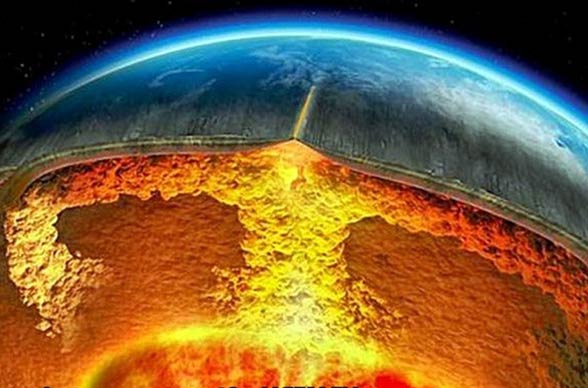
Rainbow lake
The largest hot spring (or rather a group of springs forming a kind of pool) in the United States (and the third-largest in the world) is located in Yellowstone National Park. It is called Grand Prismatic Spring and is characterized by fabulous colors, especially in the spring period.
The creators of these colors are … bacteria, and more specifically cyanobacteria and archaea, forming the so-called biofilm – biological membrane. In summer, the coating turns orange and red, while in winter it is usually dark green. The central part of the pool is filled with sterile water, as there are very high temperatures, up to + 70 C. Over the Grand Prismatic Spring, wooden footbridges have been built so that tourists can admire the untouchable beauty up close.
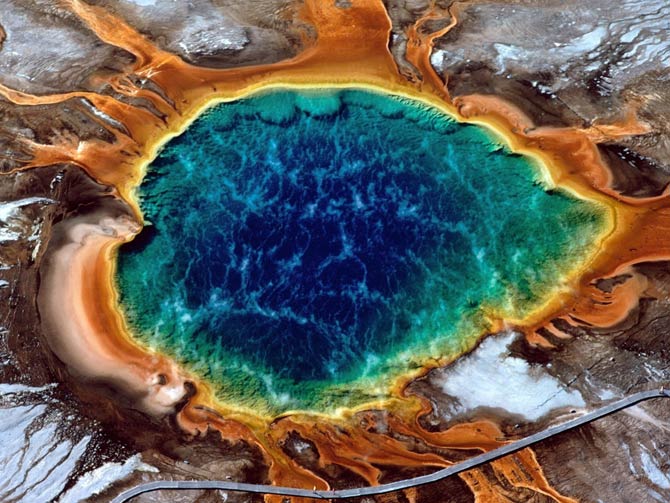
Geysers
In Yellowstone National Park you can admire geysers, and one of the most famous is Old Faithful, located in the Yellowstone geothermal complexes. Other geysers are located in the same place: Beehive Geyser, Castle Geyser and Lion Geyser.
The park has the largest (highest) active geyser in the world – Steamboat Geyser. During the greatest ejection, the hot water fountain may be over 90 m high. More often, however, we deal with smaller eruptions, reaching 3-5 m.
There are at least 10,000 geothermal features in Yellowstone, so the items listed above are only a small percentage of the rich, complex system.
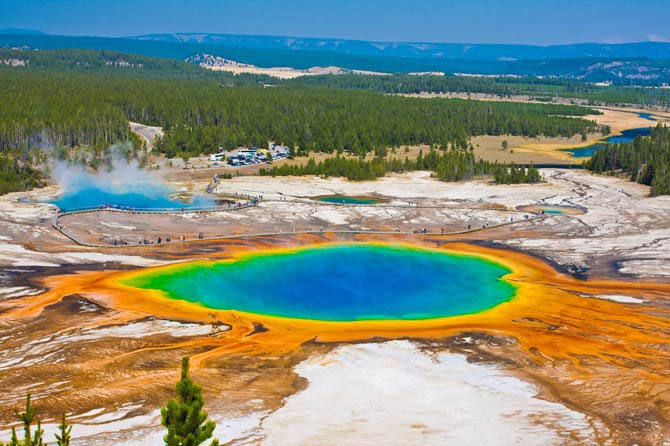
Activities for tourists
Yellowstone National Park offers several ways to spend time actively. Upon arrival, you can go fishing, hiking, boating and sightseeing. Paved roads allow access to geothermal areas, waterfalls and lakes. In winter, tourists can move around the park with special passenger vehicles or snowmobiles.
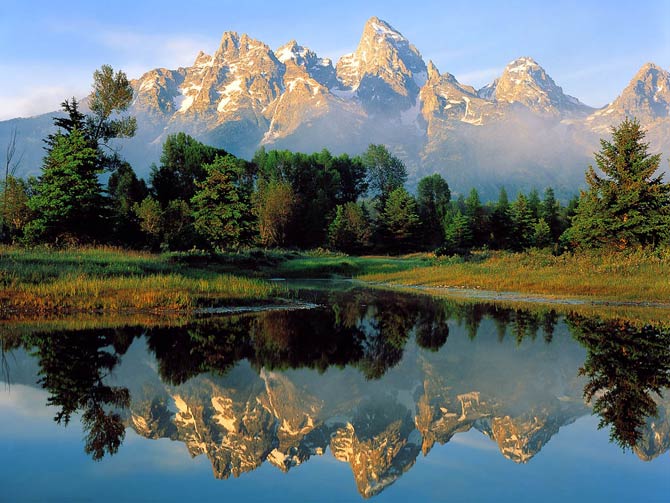
Detailed data
Yellowstone National Park
- Park area: 2,219,791 acres (8,983.18 km2)
- Established: 1872 (the first national park in the US and possibly the first in the world)
Main attractions:
- Geysers, incl. Steamboat Geyser – the tallest active geyser in the world
- Hot springs, incl. Grand Prismatic Spring swimming pool
- The Grand Canyon of the Yellowstone, approx. 24 miles (39 km) long, between 800 and 1,200 ft (240 and 370 m) deep and from .25 to .75 mi (0.40 to 1.21 km) wide.
- Yellowstone Lake – the largest lake in the National Park.
- length 20 mi (32 km)
- width 15 mi (24 km)
- Surface area 136 sq mi (350 km2)
- Average depth 139 ft (42 m)
- depth 394 ft (120 m)
- Shore length 110 mi (180 km)
- Surface elevation 7,732 ft (2,357 m)
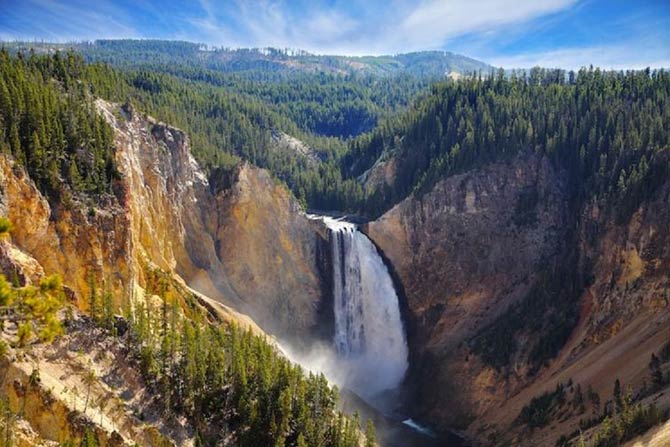
Yellowstone National Park – interesting facts
- There are at least 1,283 active geysers in Yellowstone. Of these, about 465 are active in a given year.
- Yellowstone geothermal systems account for 50% of the total number in the world.
- About 2/3 of the geysers on the planet are in Yellowstone.
- At the beginning of the park, tourists were encouraged to feed the bears. They were also allowed to take photos in the company of young bears. Everything changed when the bears, used to being fed, started attacking people. It was not until the 1970s that the park authorities changed their policy and started educating tourists about the dangers of close contacts with bears.
- Every year, forest fires occur in Yellowstone National Park. In a series of fires in 1988, as much as 1/3 of the park area was burnt.
- There are several tourist towns near the National Park where you can rent a hotel room.
